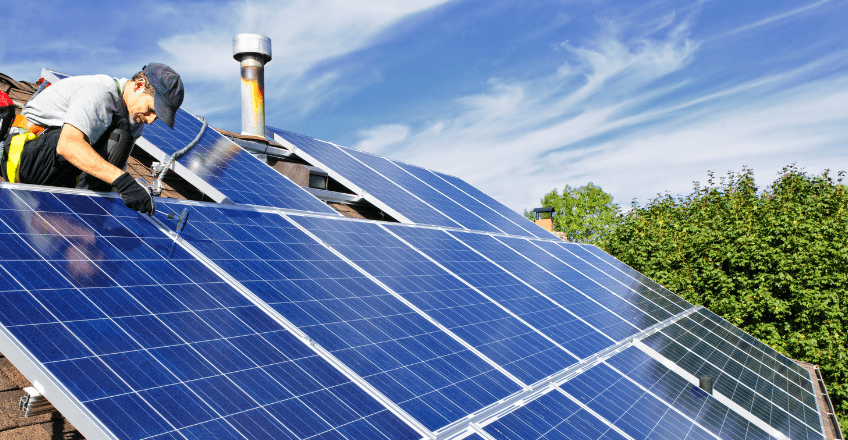How do renewable energy sources work?
Published date: April 2023

Renewable energy is becoming more widely available and used across the UK and the globe. Even though the UK used a record 40% renewable power in 2022, It’s still not always clear how we get renewable energy at home.
Here is a guide on how Solar, Wind and Hydro energy is generated to provide renewable energy at home.
How do solar panels generate electricity?
Simply put, solar panels can convert sunlight into electricity, either through photovoltaic (PV) panels or through mirrors that concentrate solar radiation to harness power. The electricity created can then be used to generate equipment or be stored in batteries or thermal storage.
Sunlight or solar radiation is emitted by the sun and comes into contact with the surface of the Earth, though not every location receives an equal amount of solar radiation, especially over the course of a year. This natural variation makes strategy vital in solar panels generating ample renewable energy at home for users.
Here are the two main types of solar power generation:
Photovoltaic system
A Photovoltaic solar panel, or ‘PV’, operates by absorbing the natural solar radiation from sunlight into the PV cells in the panels. Creating electrical charges that move due to the internal electric field inside the PV cell, allowing electricity to flow and provide power.
Concentrating Solar-Thermal Power
A large number of mirrors are organised to reflect and direct sunlight onto specifically arranged receivers in CSP systems and are usually found in open plains with uninterrupted and consistent sunlight. The CSP system harnesses solar energy and transforms it into heat, which can then be used to generate electricity or stored for future use.
In the UK, we almost exclusively use Photovoltaic solar panels to supply renewable energy at home or for businesses. Solar farms typically pass electricity through an inverter to convert it into an alternating current, which is funnelled into the grid, unless you have your own solar panels at home or for your business.
How do wind turbines generate electricity?
The wind we experience around the world every day can be harnessed to supply totally clean and renewable energy. The wind which comes into contact with a turbine turns the propeller-like blades around a rotor in the centre, which then spins the internal generator and creates electricity. This electricity is then sent down the neck of the turbine to link up to the grid in most instances or a power store.
Did you know that Wind is technically a form of solar energy? It’s caused by a combination of three concurrent events that happen all over the world.
- The sun warming Earth’s atmosphere unevenly
- The variety of different landscapes across the planet
- Earth’s rotation causes the Coriolis effect
There are two main types of wind power generation:
Horizontal-axis turbines
Horizontal-axis wind turbines are the typical structure that people think of when thinking of wind turbines. Usually, they have three blades and operate parallel to the oncoming wind, with the turbine pivoting at the top of the tower so the blades face the wind.
Vertical-axis turbines
Vertical-axis wind turbines can be made into slightly different structures and are less common than the horizontal-axis form. The two most common forms of vertical-axis turbines are the eggbeater style and the Darrieus model.
These turbines are omnidirectional, meaning they don’t need to be adjusted to point into the wind to operate – requiring less thought into their position in relation to typical wind patterns.
How does a hydropower generator make electricity?
All streams and rivers flow downhill and therefore have the potential for energy to be generated by this constant state of flow.
This kinetic energy can be harnessed by a hydropower generator to make electricity. By placing a turbine in the stream or river, the potential kinetic energy then comes into contact with the blades in a turbine which then drives a generator to produce electricity.
The greater the height/angle and the more water there is flowing through the turbine at the same time, the more electricity is generated. The efficiency of the system is also important in determining the maximum possible power generation.
On land, there is only one type of hydropower generation, though there is also tidal power too. However, tidal power generation works largely in the same way as it operates via a turbine with blades rotating (depending on tide strength). The turbine is connected to a gearbox which then turns a generator, creating electricity.
If you would like to learn more about 100% clean and renewable energy for your home, please visit Your Co-op Energy.




Leave us your comment
You need to login to submit a comment. Please click here to log in or register.